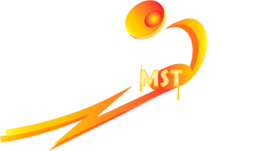One of the first posts I published here on the blog concerned using visualization as a means to perform off-line mental rehearsal. If you missed that post, you can ready it HERE. Many practitioners refer to this technique as using imagery rather than visualization as visualization tends to limit one to thinking about using the sense of vision whereas imagery refers to using all of the senses.
But what should the recreational athlete expect to experience when using imagery? A very common complaint of athletes regardless of level is that they think they just can’t use imagery techniques properly. Why is this? Could it be that we just don’t know what the experience is supposed to be like? Surely there are varying degrees of aptitude when it comes to be able to use imagery – but what should the expectation be?
In my previous post, I mentioned that one should not be too concerned if they were not able to see their imaginary world all that clearly, but without a baseline, how do we know if we are doing it right? Having given this some serious thought the last few days, I thought it might be interesting to take a look at my own practice and share with you what I experience. At the same time, I would invite readers to consider their own imagery practice and consider sharing your experience here as well!
As I mentioned in my previous post, I use imagery every night before going to sleep in which I shoot a round of sporting clays in my mind (or at least a few stations – I generally fall asleep before I can finish a round). You might think that I see each target on every station in perfect HD-quality-technicolor detail from the moment I call pull until the target explodes from my perfectly placed shot!

Well, I wish that were in the case, but in truth, I am not that accomplished! Having practiced using imagery tools for several years now, I can tell you that is not at all what I experience. What I experience is much simpler, but still very effective! I will try my best to explain.
I tend to start my imagery session by seeing a static view of a station such as the one below.

I have found that I have not been able to hold that image in my memory for that long – but I am able to hold it long enough to recall the station, the location of the traps, how the birds flew, and even some landmarks that I used for look, hold and break points. My visual interpretation that I see is certainly not as clear as the picture. Further, I am really not able to animate my image. Having a very vivid and controllable image is the holy grail of an advanced imagery practice (Lauer et al, 2010) – but even after a few years of trying, I am not there yet!
I am however, able to interact with that image in my own way! I can still imagine that I am in the station and going through my pre-shot routine including setting my feet, loading the gun, and setting up properly for the shot. Again, I tend to see static images for these operations rather than smooth video-like images. For example, instead of seeing my hands smoothly opening the action, loading shells and closing the action, I may see the gun in the open position – and then see it closed.

Once I am in position, I can imagine calling for the target. I generally am not able to see the target fly through the air, but I can imagine how I would move the gun for the particular presentation even if I can’t “see” the shot playing out. I do “hear” the trap fire, and do say “bang” in my mind as opposed to hear the sound of the gunshot.
So, I am far from the ideal of having a vivid and controllable image, but yet, I feel like I am still getting the benefit of having developed and executed the strategy for each pair of targets I imagine. I hope that as I continue my practice, I will get better and better at it!
Another way of performing off-line imagery is to actually pick up the shotgun (verifying it is unloaded and safe first) and move it in the same manner as would be done for the actual station to include the pre-shot routine as you visualize the station set-up. This is known as a kinesthetic approach. This hybrid approach is nice because you don’t need to tax the brain with nearly as much imaging work since you are actually manipulating a real shotgun. This is a great way to physically move the body exactly as would be done during shot execution.
I hope this post helps others that worry that they are not achieving the ideal in terms of vividness and controllability in their imagery sessions! Many of us are in the same situation! Please let me know how this is working for you and where you are with your ability to visualize!
References:
Lauer, L., Gould, D., Lubbers, P., & Kovacs, M. (2010). USTA Mental Skills and Drills Handbook (Pap/Cdr ed.). Coaches Choice.
